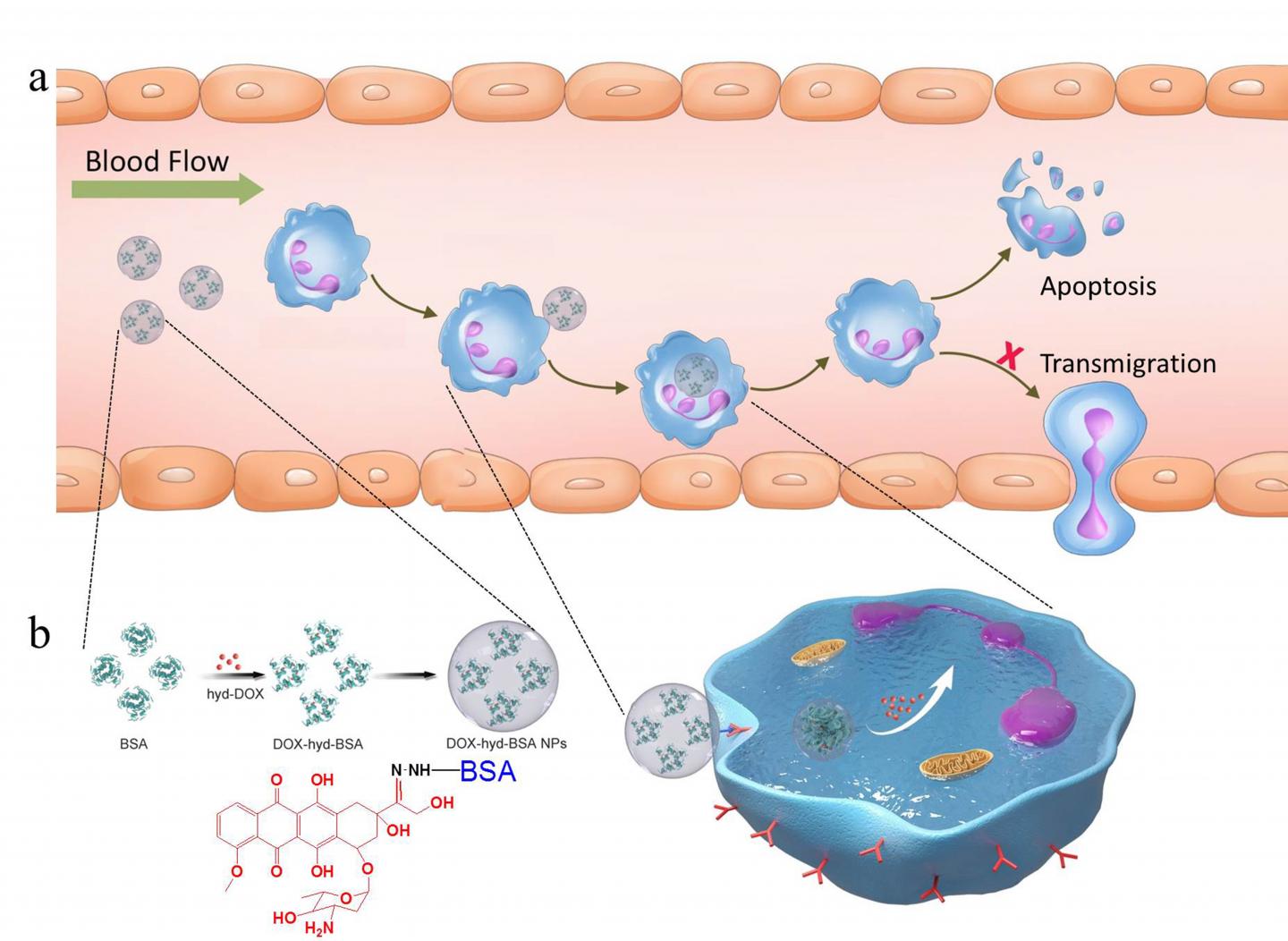November 7, 2019 -- Researchers from Washington State University have discovered a potential new treatment option for diseases associated with inflammation. The study, published in Science Advances on November 6, describes a new patent-pending nanotechnology that specifically targets activated neutrophils that compromise the immune system.
"Scientists have started realizing that neutrophils--which were always seen as the 'good guys' for the key role they play in our immune system--are actually also contributing to the pathology of all kinds of diseases," said the study's senior author Zhenjia Wang, an associate professor in the WSU College of Pharmacy and Pharmaceutical Sciences.
Polymorphonuclear neutrophils are the most abundant white blood cells (50 to 70%) in humans, playing a central role in the innate immune response to infections or tissue injury. Proinflammatory responses can be detrimental when neutrophil regulation is dysfunctional. Some conditions where this occur are: acute lung inflammation/injury, ischemia/reperfusion, rheumatoid arthritis, and sepsis. Neutrophils are a good target to reduce inflammation, however total loss of neutrophils can make the body more susceptible to infection and impaired immune function.

The researchers created nanoparticles that are capable of carrying molecules of doxorubicin (a common chemotherapy drug) INTO inflammatory neutrophils and release the drug load once inside. Doxorubicin inhibits neutrophil tissue transmigration and related inflammatory responses in bacterial toxin. The nanoparticles are derived from albumin which contain a specific F c-gamma receptor, found on the surface of only activated inflammatory neutrophils. They ensure that the drug does not get released prematurely they bonded the nanoparticles and drug molecules basically, so they are sensitive to acid concentrations. The neutrophils have an acidic core, and when the drug molecules reach the interior of the neutrophil, then the drug is cleaved and released.
To confirm the feasibility of the technology, the team conducted studies in mouse models with sepsis, a life-threatening condition caused by widespread inflammation, and ischemic stroke, caused by a blood clot that obstructs blood and oxygen flow to the brain and triggers a harmful inflammatory response. From these studies, the researchers were able to successfully confirm that the nanoparticles help increase survival and minimize effects from these conditions.
"Our experiment found that our doxorubicin albumin nanoparticles can decrease the lifespan of harmful neutrophils in the blood stream," Wang said. "More importantly, we also found that our nanoparticles don't inhibit the neutrophils' function in the bone marrow."
The team hopes to conduct more studies to gain a deeper understanding of how the nanoparticles are operating at a molecular level in order to optimize the structure. They also plan to bring the technology to clinical trials as quickly as possible and share benefits of this technology with patients.
Do you have a unique perspective on your research related to nanotechnology and drug discovery? Contact the editor today to learn more.
Copyright © 2019 scienceboard.net






